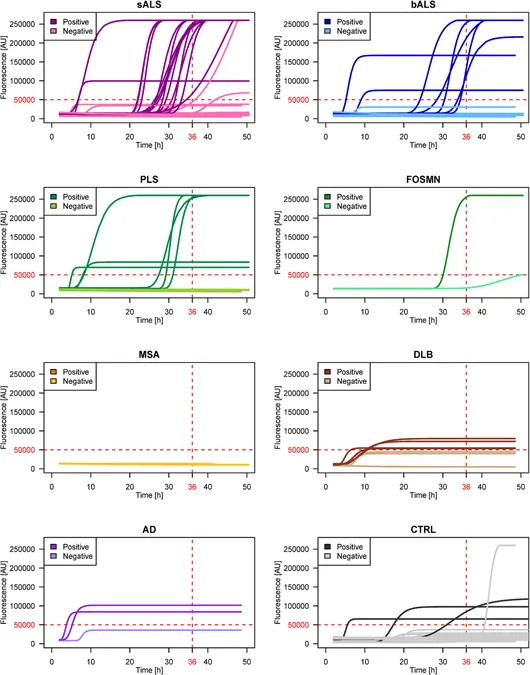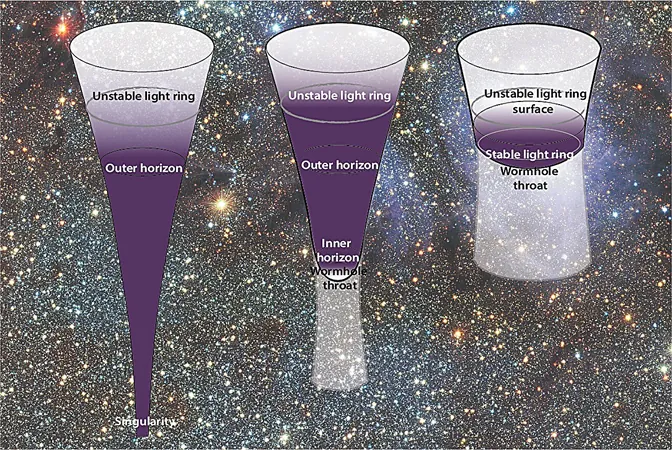
Revealing the Role of TDP-43 in ALS: A Potential Biomarker from the Olfactory Mucosa
2025-04-26
Author: Arjun
Amyotrophic lateral sclerosis (ALS) is a devastating neurodegenerative disease that relentlessly paves the way toward progressive motor decline due to the degeneration of both upper and lower motor neurons. The typical survival span after the onset of symptoms rarely extends beyond 2 to 3 years, but this varies significantly across different forms of the disease.
Diverse Clinical Subtypes of ALS
ALS is classified into several clinical subtypes: 1. **Spinal-Onset ALS (sALS)** – The most common, affecting ~70-75% of patients. 2. **Bulbar-Onset ALS (bALS)** – Involves difficulties in speech and swallowing, seen in roughly 20-25% of cases. 3. **Primary Lateral Sclerosis (PLS)** – Characterized solely by upper motor neuron involvement. 4. **Progressive Muscular Atrophy (PMA)** – Focuses on lower motor neuron involvement. 5. **Respiratory-Onset ALS (rALS)** – A rare form occurring in ~3-5% of cases. Additionally, conditions like Facial Onset Sensory and Motor Neuronopathy (FOSMN) also belong to the ALS spectrum.
Shared Pathological Features
Despite the diverse manifestations of ALS, nearly all cases display a key pathological hallmark: cytoplasmic inclusions of the misfolded transactive response DNA-binding protein, TDP-43. This protein's aggregation is not only critical for ALS diagnosis but is also implicated in several other neurodegenerative diseases. Previously overlooked, new studies show that even healthy elderly individuals can develop TDP-43 aggregates.
Unlocking Biomarkers for Early Diagnosis
There’s an urgent need for biomarkers that can provide early diagnosis and aid in therapy development. TDP-43 emerges as a promising candidate. Recent studies have demonstrated significantly elevated plasma TDP-43 levels in ALS patients compared to healthy individuals, suggesting that TDP-43 may offer a non-invasive approach to diagnose TDP-43 proteinopathies.
Innovative Research on TDP-43 Seeding Activity
Recent discoveries highlight TDP-43 seeding activity present in the olfactory mucosa of ALS patients. This novel approach utilizes seed amplification assays (SAAs), a technique capable of detecting low amounts of pathological proteins in peripheral tissues. Encouraging results show that TDP-43 can indeed be identified in the olfactory mucosa of patients with both sporadic and genetic forms of ALS.
Study Insights and Findings
Conducted at the Fondazione IRCCS Istituto Neurologico Carlo Besta in Milan, the study analyzed 86 ALS patients along with other neurodegenerative disease controls and healthy individuals. The findings revealed that nearly 46.9% of the ALS cohort exhibited positive TDP-43 seeding activity in their olfactory samples.
Correlations with Clinical Progression
Interestingly, an examination of plasma levels showed higher concentrations of TDP-43 and neurofilament-light chain (NfL) in ALS patients compared to controls. However, a distinctive trend emerged where increasing disease severity correlated with reduced plasma TDP-43 levels, indicating that as the disease progresses, TDP-43 may increasingly accumulate within the central nervous system.
Potential for Future Research
This research not only provides critical insights into ALS pathophysiology but also suggests that assessing TDP-43 and related protein levels could significantly aid in monitoring disease progression. To understand the nuances of TDP-43's role in ALS and potentially serve as biomarkers, more robust and large-scale studies are essential.
This study reinforces the notion that olfactory mucosa might serve as a rich source for understanding TDP-43 pathology, offering a promising pathway for future diagnostics in ALS and other neurodegenerative disorders.




 Brasil (PT)
Brasil (PT)
 Canada (EN)
Canada (EN)
 Chile (ES)
Chile (ES)
 Česko (CS)
Česko (CS)
 대한민국 (KO)
대한민국 (KO)
 España (ES)
España (ES)
 France (FR)
France (FR)
 Hong Kong (EN)
Hong Kong (EN)
 Italia (IT)
Italia (IT)
 日本 (JA)
日本 (JA)
 Magyarország (HU)
Magyarország (HU)
 Norge (NO)
Norge (NO)
 Polska (PL)
Polska (PL)
 Schweiz (DE)
Schweiz (DE)
 Singapore (EN)
Singapore (EN)
 Sverige (SV)
Sverige (SV)
 Suomi (FI)
Suomi (FI)
 Türkiye (TR)
Türkiye (TR)
 الإمارات العربية المتحدة (AR)
الإمارات العربية المتحدة (AR)